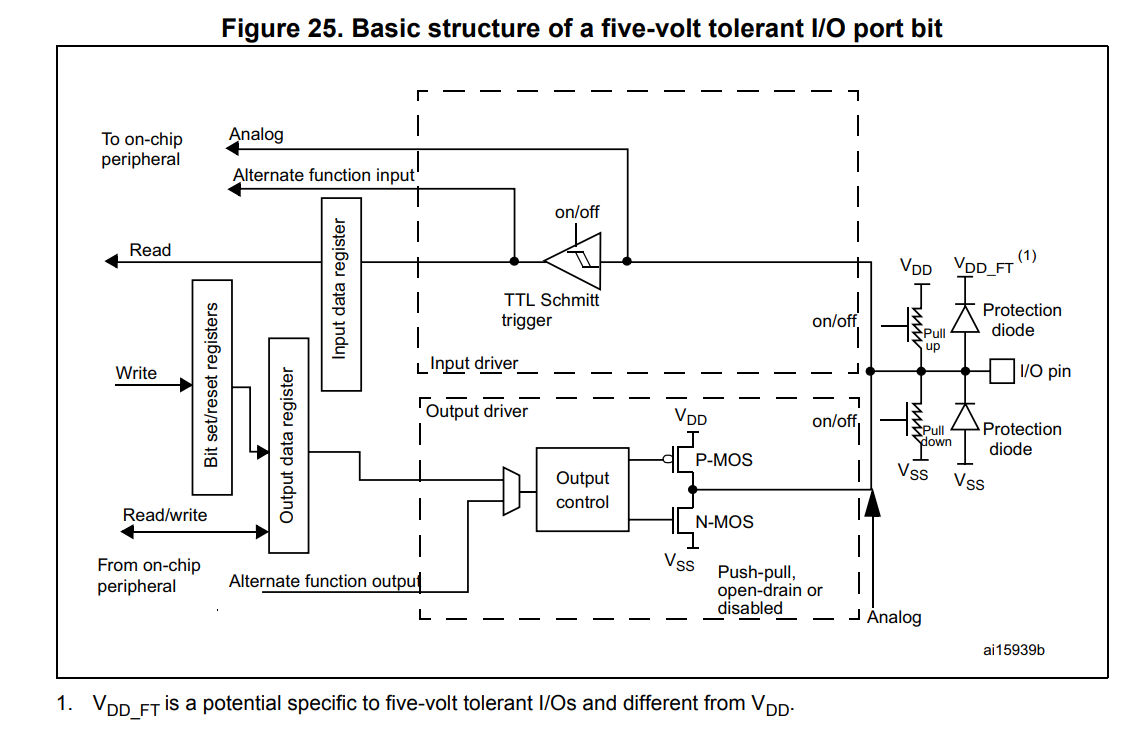Difference between revisions of "STM32 Five-volt Tolerant I/O Pins (FT)"
Jump to navigation
Jump to search
| Line 1: | Line 1: | ||
[[Category:STM32]][[Category:STM32 Hardware]][[Category:STM32 Documentation]]{{metadesc|STM32 Five-volt Tolerant I/O Pins}} | [[Category:STM32]][[Category:STM32 Hardware]][[Category:STM32 Documentation]]{{metadesc|STM32 Five-volt Tolerant I/O Pins}} | ||
| − | Most of the [[GPIO]] pins on [[STM32]] [[MCU]]s are 5V tolerant. | + | [[Arduino]]s were originally designed as 5V devices. [[STM32]] have always been running on 3.3V and they will fry if operated at 5V. |
| + | |||
| + | Most of the [[GPIO]] pins on [[STM32]] [[MCU]]s are 5V tolerant. This means that they can accept a 5V input without any issues. | ||
<div class="res-img"> | <div class="res-img"> | ||
[[File:5v tolerant pin.png|1200px]] | [[File:5v tolerant pin.png|1200px]] | ||
</div> | </div> | ||
